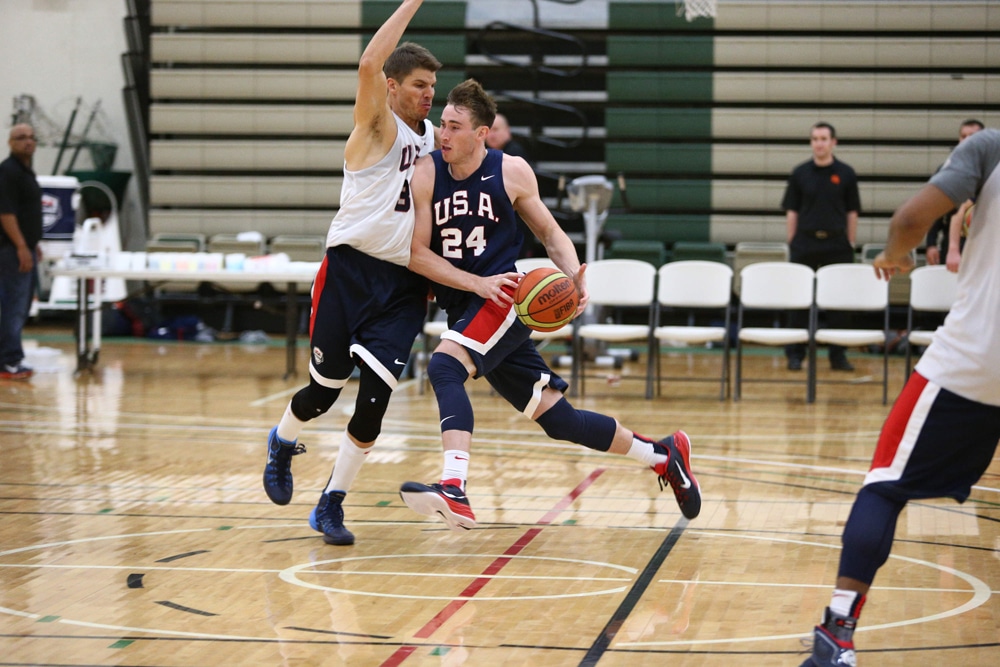
Coaching Strategies for Improving Defensive Intensity: Developing a Defensive Mindset
Defensive intensity is a crucial element for a successful basketball team. It can significantly impact a team’s performance, disrupt opponents’ plays, and create scoring opportunities. By fostering a culture of defensive intensity, coaches can help their teams excel in high-pressure situations and secure victories.
This article explores effective coaching strategies for enhancing defensive intensity and building a tenacious defense.

1. Understanding the Importance of Defensive Intensity
Defensive intensity involves aggressive and focused efforts to disrupt the opponent’s offensive plays. High defensive intensity can lead to more turnovers, better rebound control, and overall improved team performance. Key aspects include:
Impact on Performance
When players commit to playing tough defense, it can energize the entire team and create a psychological edge. The energy and focus on defense can also help build momentum, resulting in a more cohesive and determined group.
Disruption of Opponent’s Flow
High defensive intensity can break an opponent’s rhythm, causing frustration and forcing them into low-percentage shots. Effective pressure can lead to hurried decisions and mistakes, providing opportunities for the defensive team.
Development of Teamwork and Communication
Intense defensive play requires constant communication and teamwork. As players learn to rely on one another, their bonds strengthen, which can improve overall team dynamics.

2. Setting Clear Defensive Goals
Establish clear goals for defensive intensity to guide your coaching strategies:
Establish Defensive Metrics
Define specific metrics for defensive performance, such as points allowed per game, opponent shooting percentages, and turnover rates. Having quantifiable goals helps players understand what they are aiming for.
Communicate Expectations
Clearly communicate defensive expectations to players. Emphasize the importance of defensive effort and accountability in achieving team goals. Players need to know that defense is a priority and that their contributions matter.
Set Benchmarks
Use benchmarks to track progress and motivate players. Set realistic and achievable targets for defensive improvements throughout the season. Celebrating milestones fosters a sense of accomplishment and encourages ongoing commitment.
3. Incorporating Intensity into Practice Drills
Design practice drills that emphasize and develop defensive intensity:
Full-Court Press Drills
Incorporate full-court press drills to improve on-ball pressure and conditioning. These drills simulate game situations and enhance defensive aggressiveness. Players learn to stay in the passing lanes and disrupt the offense from the get-go.
Close-Out Drills
Use close-out drills to teach players how to contest shots effectively and maintain defensive pressure on the ball handler. Proper technique in closing out can make a significant difference in preventing good shooting opportunities for the opponent.
Defensive Footwork Drills
Focus on defensive footwork drills to improve agility and positioning. Proper footwork enhances a player’s ability to stay in front of their opponent and react quickly. This skill is fundamental in creating a solid defensive foundation.

4. Building Defensive Fundamentals
Strong defensive fundamentals form the foundation for high defensive intensity:
Stance and Positioning
Teach players the proper defensive stance and positioning. Emphasize staying low, keeping a wide base, and maintaining balance to improve defensive effectiveness. Proper stance allows for quicker lateral movements and better reaction times.
Hand Placement and Ball Pressure
Instruct players on proper hand placement and how to apply effective ball pressure. Proper hand placement can disrupt passing lanes and challenge shots. Coaches should emphasize keeping active hands to create deflections and turnovers.
Communication and Awareness
Encourage constant communication among defenders. Effective communication helps players coordinate their movements and maintain defensive integrity. Simple calls for screens, switches, and help can make a significant difference in execution.
5. Emphasizing Mental Toughness
Mental toughness is essential for maintaining defensive intensity throughout the game:
Focus and Concentration
Encourage players to stay focused and maintain concentration during defensive plays. Mental discipline helps players remain aggressive and resilient. Use drills that require intense focus to develop this skill.
Handling Adversity
Teach players how to handle adversity, such as foul trouble or challenging opponents. Developing mental resilience ensures that defensive intensity remains high despite setbacks. Discussing past experiences can help players learn how to respond to similar situations.
Positive Reinforcement
Use positive reinforcement to build confidence and motivate players. Recognize and reward strong defensive efforts to reinforce desired behaviors. Celebrating defensive stops or successful plays can enhance morale and motivation.
6. Instilling a Defensive Mindset
Foster a defensive mindset among players by emphasizing the value of defense:
Defensive Philosophy
Develop and communicate a defensive philosophy that prioritizes effort, aggression, and teamwork. Ensure that players understand the importance of defense in achieving team success. A well-articulated philosophy can unify the team’s approach.
Role Modeling
Model defensive intensity through your own actions and coaching style. Demonstrate a commitment to defensive principles and work ethic. Coaches should also be ready to get on the floor and demonstrate proper techniques, making the learning experience more relatable.
Team Culture
Create a team culture that values and celebrates defensive accomplishments. Encourage players to take pride in their defensive contributions and support each other. Recognizing defensive plays during team meetings or in practice can help instill this culture.
7. Utilizing Video Analysis
Video analysis is a powerful tool for improving defensive intensity:
Review Game Footage
Analyze game footage to identify defensive strengths and areas for improvement. Use video to highlight successful defensive plays and areas that need adjustment. Coaches should focus on specific players as well as overall team performance.
Break Down Opponents
Use video analysis to study opponents’ offensive strategies and tendencies. Prepare specific defensive adjustments based on the insights gained. Knowing an opponent’s favorite plays or top scorers can shape your defensive game plan.
Player Feedback
Provide individual feedback to players based on video analysis. Show them areas where they can improve their defensive intensity and effectiveness. Personal feedback helps players understand their roles better and work on specific techniques.

8. Encouraging Competitive Practices
Competitive practices simulate game conditions and enhance defensive intensity:
Scrimmages and Competitive Drills
Incorporate scrimmages and competitive drills into practices. These activities mimic game situations and encourage players to maintain high defensive intensity. Competition can bring out the best in players and help them learn to handle pressure.
Situational Drills
Design situational drills that replicate common game scenarios, such as late-game defensive stands or defending in transition. These drills prepare players for real-game challenges and help them develop their decision-making skills.
Challenge and Reward
Create challenges and rewards to motivate players during practices. Recognize and reward strong defensive efforts to encourage continued intensity. Friendly competition can foster camaraderie and increase focus during drills.
9. Evaluating and Adjusting Strategies
Regularly evaluate and adjust your defensive strategies to ensure continued improvement:
Assess Defensive Performance
Monitor and assess your team’s defensive performance using metrics and observations. Identify areas for improvement and adjust your coaching strategies accordingly. Consistent evaluation helps maintain focus and accountability.
Solicit Feedback
Gather feedback from players about the effectiveness of defensive strategies and practices. Use this feedback to make necessary adjustments and address any concerns. Encouraging open dialogue fosters a culture of continuous improvement.
Continuous Improvement
Emphasize a mindset of continuous improvement. Encourage players to consistently work on their defensive skills and strive for excellence. Celebrate progress, but also set new goals to keep pushing the team forward.
Coaching Strategies for Improving Defensive Intensity Conclusion:
Improving defensive intensity is essential for building a successful basketball team. By setting clear goals, incorporating intensity into practice drills, building defensive fundamentals, emphasizing mental toughness, instilling a defensive mindset, utilizing video analysis, encouraging competitive practices, and regularly evaluating strategies, you can enhance your team’s defensive performance.
Implement these strategies to foster a high level of defensive intensity and drive your team toward success.



